Dual targeting of the thioredoxin and glutathione antioxidant systems in malignant B cells: a novel synergistic therapeutic approach
- PMID: 25448488
- PMCID: PMC4324472
- DOI: 10.1016/j.exphem.2014.10.004
Dual targeting of the thioredoxin and glutathione antioxidant systems in malignant B cells: a novel synergistic therapeutic approach
Abstract
B-cell malignancies are a common type of cancer. One approach to cancer therapy is to either increase oxidative stress or inhibit the stress response systems on which cancer cells rely. In this study, we combined nontoxic concentrations of Auranofin (AUR), an inhibitor of the thioredoxin system, with nontoxic concentrations of buthionine-sulfoximine (BSO), a compound that reduces intracellular glutathione levels, and investigated the effect of this drug combination on multiple pathways critical for malignant B-cell survival. Auranofin interacted synergistically with BSO at low concentrations to trigger death in multiple malignant B-cell lines and primary mantle-cell lymphoma cells. Additionally, there was less toxicity toward normal B cells. Low AUR concentrations inhibited thioredoxin reductase (TrxR) activity, an effect significantly increased by BSO cotreatment. Overexpression of TrxR partially reversed AUR+BSO toxicity. Interestingly, the combination of AUR+BSO inhibited nuclear factor κB (NF-κB) signaling. Moreover, synergistic cell death induced by this regimen was attenuated in cells overexpressing NF-κB proteins, arguing for a functional role for NF-κB inhibition in AUR+BSO-mediated cell death. Together, these findings suggest that AUR+BSO synergistically induces malignant B-cell death, a process mediated by dual inhibition of TrxR and NF-κB, and such an approach warrants further investigation in B-cell malignancies.
Copyright © 2015 ISEH - International Society for Experimental Hematology. Published by Elsevier Inc. All rights reserved.
Conflict of interest statement
Authors have no competing interests.
Figures
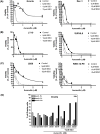
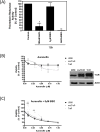
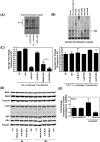
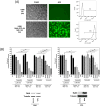
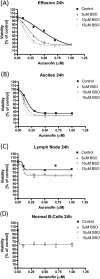
Similar articles
-
Targeting redox homeostasis in rhabdomyosarcoma cells: GSH-depleting agents enhance auranofin-induced cell death.Cell Death Dis. 2017 Oct 5;8(10):e3067. doi: 10.1038/cddis.2017.412. Cell Death Dis. 2017. PMID: 28981107 Free PMC article.
-
Susceptibility of human head and neck cancer cells to combined inhibition of glutathione and thioredoxin metabolism.PLoS One. 2012;7(10):e48175. doi: 10.1371/journal.pone.0048175. Epub 2012 Oct 31. PLoS One. 2012. PMID: 23118946 Free PMC article.
-
Simultaneous inhibition of glutathione- and thioredoxin-dependent metabolism is necessary to potentiate 17AAG-induced cancer cell killing via oxidative stress.Free Radic Biol Med. 2012 Jan 15;52(2):436-43. doi: 10.1016/j.freeradbiomed.2011.10.493. Epub 2011 Nov 4. Free Radic Biol Med. 2012. PMID: 22100505 Free PMC article.
-
Potential Anticancer Activity of Auranofin.Chem Pharm Bull (Tokyo). 2019;67(3):186-191. doi: 10.1248/cpb.c18-00767. Chem Pharm Bull (Tokyo). 2019. PMID: 30827998 Review.
-
The thioredoxin antioxidant system.Free Radic Biol Med. 2014 Jan;66:75-87. doi: 10.1016/j.freeradbiomed.2013.07.036. Epub 2013 Jul 27. Free Radic Biol Med. 2014. PMID: 23899494 Review.
Cited by
-
Upgrade of an old drug: Auranofin in innovative cancer therapies to overcome drug resistance and to increase drug effectiveness.Med Res Rev. 2022 May;42(3):1111-1146. doi: 10.1002/med.21872. Epub 2021 Dec 1. Med Res Rev. 2022. PMID: 34850406 Free PMC article. Review.
-
Oxidative Stress and Inflammation in B-Cell Lymphomas.Antioxidants (Basel). 2023 Apr 15;12(4):936. doi: 10.3390/antiox12040936. Antioxidants (Basel). 2023. PMID: 37107311 Free PMC article. Review.
-
New insights into redox homeostasis as a therapeutic target in B-cell malignancies.Curr Opin Hematol. 2017 Jul;24(4):393-401. doi: 10.1097/MOH.0000000000000351. Curr Opin Hematol. 2017. PMID: 28402987 Free PMC article. Review.
-
Dual targeting of the thioredoxin and glutathione systems in cancer and HIV.J Clin Invest. 2016 May 2;126(5):1630-9. doi: 10.1172/JCI85339. Epub 2016 May 2. J Clin Invest. 2016. PMID: 27135880 Free PMC article. Review.
-
Putative Role of Nuclear Factor-Kappa B But Not Hypoxia-Inducible Factor-1α in Hypoxia-Dependent Regulation of Oxidative Stress in Hematopoietic Stem and Progenitor Cells.Antioxid Redox Signal. 2019 Jul 20;31(3):211-226. doi: 10.1089/ars.2018.7551. Epub 2019 Apr 10. Antioxid Redox Signal. 2019. PMID: 30827134 Free PMC article.
References
-
- Sharma SV, Settleman J. Exploiting the balance between life and death: targeted cancer therapy and “oncogenic shock”. Biochem Pharmacol. 2010;80:666–673. - PubMed
-
- Champion GD, Cairns DR, Bieri D, et al. Dose response studies and longterm evaluation of auranofin in rheumatoid arthritis. J Rheumatol. 1988;15:28–34. - PubMed
-
- Williams HJ, Ward JR, Egger MJ, et al. Auranofin, gold sodium thiomalate, and placebo in the treatment of rheumatoid arthritis. Cooperative systematic studies of rheumatic diseases. Clin Rheumatol. 1984;3(Suppl 1):39–50. - PubMed
-
- Furst DE. Mechanism of action, pharmacology, clinical efficacy and side effects of auranofin. An orally administered organic gold compound for the treatment of rheumatoid arthritis. Pharmacotherapy. 1983;3:284–298. - PubMed
Publication types
MeSH terms
Substances
Grants and funding
LinkOut - more resources
Full Text Sources
Other Literature Sources
Miscellaneous

